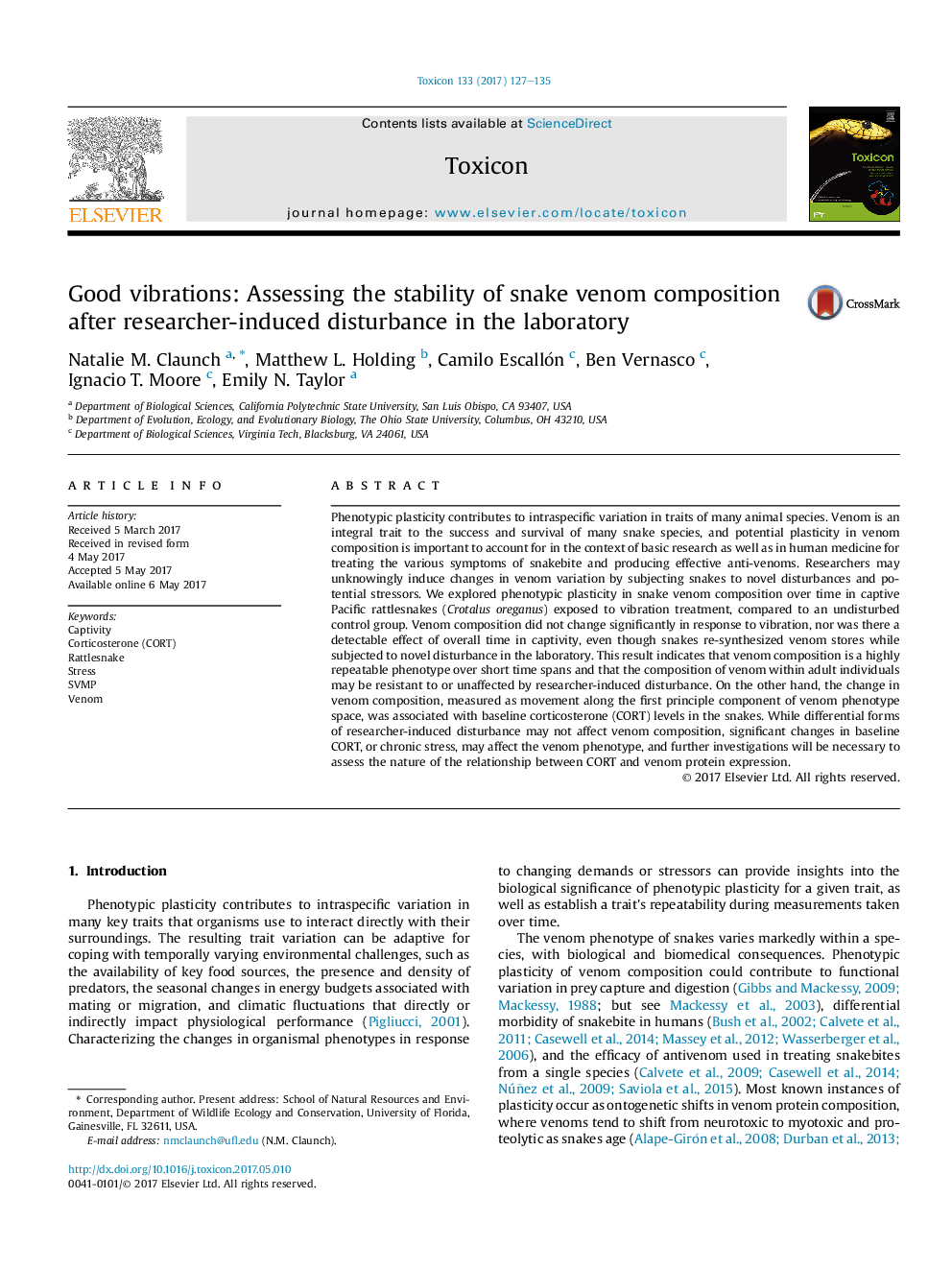| کد مقاله | کد نشریه | سال انتشار | مقاله انگلیسی | نسخه تمام متن |
|---|---|---|---|---|
| 5519362 | 1544103 | 2017 | 9 صفحه PDF | دانلود رایگان |
• Individual snake venoms were highly repeatable in snakes that were exposed to a novel stressor.
• Initial and final individual snake venoms sampled with a 2 week interval were not significantly different in snakes acclimated to laboratory for at least 10 days.
• Corticosterone was correlated with slight changes in venom composition after re-synthesis.
Phenotypic plasticity contributes to intraspecific variation in traits of many animal species. Venom is an integral trait to the success and survival of many snake species, and potential plasticity in venom composition is important to account for in the context of basic research as well as in human medicine for treating the various symptoms of snakebite and producing effective anti-venoms. Researchers may unknowingly induce changes in venom variation by subjecting snakes to novel disturbances and potential stressors. We explored phenotypic plasticity in snake venom composition over time in captive Pacific rattlesnakes (Crotalus oreganus) exposed to vibration treatment, compared to an undisturbed control group. Venom composition did not change significantly in response to vibration, nor was there a detectable effect of overall time in captivity, even though snakes re-synthesized venom stores while subjected to novel disturbance in the laboratory. This result indicates that venom composition is a highly repeatable phenotype over short time spans and that the composition of venom within adult individuals may be resistant to or unaffected by researcher-induced disturbance. On the other hand, the change in venom composition, measured as movement along the first principle component of venom phenotype space, was associated with baseline corticosterone (CORT) levels in the snakes. While differential forms of researcher-induced disturbance may not affect venom composition, significant changes in baseline CORT, or chronic stress, may affect the venom phenotype, and further investigations will be necessary to assess the nature of the relationship between CORT and venom protein expression.
Journal: Toxicon - Volume 133, July 2017, Pages 127–135
